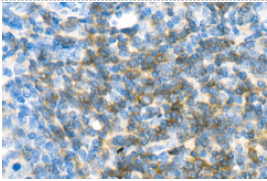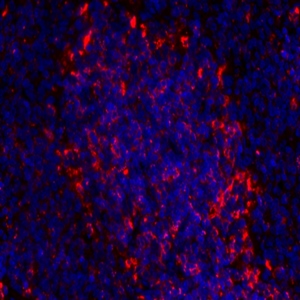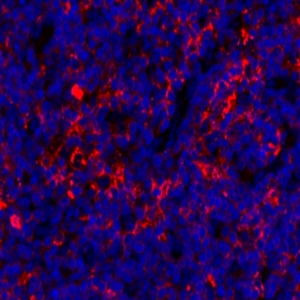| Reactivity: | H,R & H,R |
| Applications: | IHC & IF |
| Host Species: | Rabbit |
| Clonality: | Polyclonal |
| Full Name: | CD27 rabbit polyclonal |
Gene Name: | CD27 antigen |
Synonyms: | CD27, S152, S152, LPFS2, T14, TNFRSF7, Tp55, CD27 molecule |
Immunogen: | KLH conjugated Synthetic peptide corresponding to Mouse CD27 |
Isotype: | IgG |
Purity: | Affinity purification |
Subcellular location: | Membrane |
Uniprot ID: | P26842, P41272 |
Product Usage Information
Applications | Species | Dilution | Positive tissue |
IHC | Human, Rat | 1: 500-1: 3500 | tonsil |
IF | Human, Rat | 1: 1000-1: 2000 | Immune spleen, lymph, thymus |
Background
CD27 is a member of the tumor necrosis factor receptor superfamily. It is currently of interest to immunologists as a co-stimulatory immune checkpoint molecule. The protein encoded by this gene is a member of the TNF-receptor superfamily. This receptor is required for generation and long-term maintenance of T cell immunity. It binds to ligand CD70, and plays a key role in regulating B-cell activation and immunoglobulin synthesis. This receptor transduces signals that lead to the activation of NF-κB and MAPK8/JNK. Adaptor proteins TRAF2 and TRAF5 have been shown to mediate the signaling process of this receptor. CD27-binding protein (SIVA), a proapoptotic protein, can bind to this receptor and is thought to play an important role in the apoptosis induced by this receptor.
Images
 |
Immunohistochemistry analysis of paraffin-embedded human tonsil using CD27 (GB11583) at dilution of 1: 1000 |
|
|
Immunofluorescent analysis of paraformaldehyde-fixed rat Immune spleen using CD27 (GB11583) at dilution of 1: 1000 |
|
|
Immunofluorescent analysis of paraformaldehyde-fixed rat lymph using CD27 (GB11583) at dilution of 1: 1000 |
|
|
Immunofluorescent analysis of paraformaldehyde-fixed rat thymus using CD27 (GB11583) at dilution of 1: 1000 |
Storage
| Storage |
Store at -20°C for one year. Avoid repeated freeze/thaw cycles |
| Storage Buffer |
PBS with 0.02%sodium azide, 100 μg/ml BSA and 50% glycerol. |



